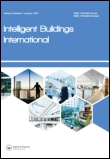
Intelligent Buildings International
Scope & Guideline
Pioneering the Future of Smart Building Technologies
Introduction
Aims and Scopes
- Sustainable Building Practices:
The journal emphasizes research on sustainable architecture and construction methods, including biomimicry, renewable energy technologies, and low-carbon design strategies that contribute to environmental sustainability. - Integration of Intelligent Technologies:
A core focus is on the integration of smart technologies within building systems, such as Building Information Modeling (BIM), digital twins, and artificial intelligence (AI) applications to enhance building performance and management. - User-Centric Design and Well-being:
Research addressing the impact of building design on occupant health, well-being, and productivity is a significant area of interest, exploring biophilic design, environmental quality, and user satisfaction. - Urbanization and Smart Cities:
The journal covers themes related to urbanization, including smart city planning, land use optimization, and the role of intelligent buildings in urban environments. - Innovative Construction Techniques:
Exploration of advanced construction techniques, such as prefabrication, adaptive building envelopes, and 3D printing technologies, is a consistent focus, highlighting their implications for efficiency and sustainability.
Trending and Emerging
- Neuroarchitecture and Bioethics:
An emerging focus on the ethical implications of neuroarchitecture highlights the intersection of psychology and architecture, aiming to understand how design choices impact human behavior and well-being. - Nature-Based Solutions:
The exploration of integrating nature-based solutions into construction practices reflects a growing recognition of the importance of biophilic design and ecological approaches in the built environment. - Smart Building Management Systems:
A trend towards the development and application of digital twin technologies and advanced facility management systems showcases the increasing reliance on intelligent systems for optimizing building operations. - AI and Machine Learning Applications:
Research utilizing AI and machine learning for predictive modeling and optimization in building design and energy management is gaining momentum, indicating a shift towards data-driven methodologies. - Health and Well-being in Workspaces:
There is a rising interest in studies examining the effects of workplace environments on health, well-being, and productivity, emphasizing the importance of user-centric design in intelligent buildings.
Declining or Waning
- Traditional Construction Methods:
There has been a noticeable decrease in publications focusing solely on conventional construction practices, as the field moves toward innovative and technologically integrated approaches. - Basic Environmental Assessments:
Research centered around basic indoor environmental quality assessments without the integration of advanced technologies or methodologies appears to be waning, suggesting a shift towards more complex evaluations. - Generalized Energy Performance Studies:
Studies that provide generalized assessments of energy performance without specific applications of new technologies or innovative strategies are becoming less prominent, indicating a move towards more specialized or technologically driven research. - Non-Intelligent Building Applications:
Publications that do not incorporate intelligent systems or smart technologies in building design and management are appearing less frequently, reflecting the journal's evolving focus towards intelligent solutions. - Static Design Methodologies:
The journal seems to be moving away from static design methodologies that do not involve adaptive or responsive systems, as the emphasis shifts toward dynamic, user-centric design approaches.
Similar Journals
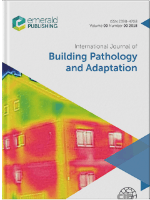
International Journal of Building Pathology and Adaptation
Championing knowledge in building assessment and adaptation.International Journal of Building Pathology and Adaptation is a premier publication dedicated to advancing knowledge in the field of building pathology and adaptation. Established by the esteemed Emerald Group Publishing Ltd, this journal serves as a vital platform for researchers and practitioners focusing on the assessment, preservation, and innovative adaptation of built environments. With an impressive Q2 ranking in both Building and Construction and Civil and Structural Engineering, and a Scopus ranking of #62 out of 223 in the relevant engineering disciplines, the journal showcases high-quality research with significant practical implications. Although currently not featuring an open-access model, its access options cater to a wide audience aiming to explore cutting-edge studies from 2017 to 2024. The journal's commitment to bridging the gap between academic inquiry and real-world application makes it an essential resource for anyone dedicated to advancing the resilience and sustainability of the built environment.
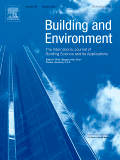
BUILDING AND ENVIRONMENT
Advancing sustainable solutions for a resilient future.BUILDING AND ENVIRONMENT, published by Pergamon-Elsevier Science Ltd, stands as a premier journal in the fields of Building and Construction, Civil and Structural Engineering, Environmental Engineering, and Geography, Planning, and Development. With its ISSN 0360-1323 and E-ISSN 1873-684X, this esteemed publication has garnered significant acclaim, achieving a Q1 ranking in multiple categories for 2023, reflecting its influential role in advancing research and innovation within these domains. Spanning from 1976 to 2024, the journal invites contributions that explore the intersection of sustainable design, energy efficiency, and urban development, addressing critical issues faced in modern architecture and environmental impact. Although it does not offer open access, its comprehensive articles and reviews are pivotal for researchers, professionals, and students dedicated to creating sustainable built environments. Situated in the United Kingdom, the journal serves as a vital resource for those aiming to contribute to the knowledge base in this rapidly evolving ecologically focused field.
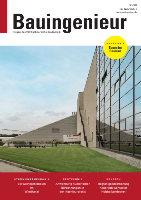
Bauingenieur
Shaping the Future of Building and Construction EngineeringBauingenieur, an established journal in the field of Building and Construction and Civil and Structural Engineering, has been a significant platform for scholarly discourse since its inception in 1969. Published by VDI FACHMEDIEN GMBH & CO KG UNTERNEHMEN FACHINFORMATIONEN in Germany, this journal, available in both print (ISSN: 0005-6650) and electronic formats (E-ISSN: 1436-4867), serves as a vital resource for researchers, professionals, and students dedicated to advancing knowledge and practice in engineering. Although currently without open access options, Bauingenieur aspires to contribute to the academic community by presenting cutting-edge research, case studies, and technical reviews within the realms of construction and civil engineering. As evidenced by its categorizations in the 2023 Scopus rankings, where it has a Q4 designation in both relevant categories, it provides an essential resource for understanding current trends and challenges in the industry. The journal welcomes contributions that push the boundaries of knowledge and foster innovative solutions in the built environment.

Frontiers in Built Environment
Fostering collaboration for resilient built environments.Frontiers in Built Environment, published by FRONTIERS MEDIA SA, is a highly regarded open-access journal that has established itself as a significant platform for cutting-edge research in the fields of building and construction, geography, planning and development, and urban studies. Since its inception in 2015, this journal has embraced a commitment to disseminating high-quality, peer-reviewed research, allowing researchers, professionals, and students to access pivotal findings and insights without financial barriers. With an impressive 2023 impact factor, it ranks in the Q1 tier for Urban Studies and is positioned within the Q2 tier for both Building and Construction and Geography, Planning and Development, demonstrating its influence and relevance in evolving urban and environmental challenges. Its rigorous indexing, exemplified by a strong Scopus ranking, reflects its contribution to the advancement of knowledge in these critical areas. With a clear dedication to fostering innovation and collaboration within the built environment sector, Frontiers in Built Environment is essential reading for those engaged in shaping sustainable urban futures.

Journal of Green Building
Exploring the Future of Eco-Friendly ConstructionJournal of Green Building, with its ISSNs 1552-6100 and 1943-4618, is a premier academic journal published by COLLEGE PUBLISHING in the United States. This journal, established in 2006 and continuing through 2024, serves as a vital platform for the dissemination of research on sustainable architecture, building technologies, and environmental design. With its current impact factor signifying a robust academic contribution, it is categorized in Q2 in Architecture and Q3 across several other disciplines, including Building and Construction, Environmental Engineering, and Public Health. The journal’s Scopus rankings demonstrate its strong positioning in the engineering and environmental science communities, making it an essential resource for researchers and professionals aiming to advance knowledge in green building practices. While it is not an Open Access journal, the rich content is pivotal for those involved in the critical intersection of sustainability and construction science. Whether you are a seasoned professional or a dedicated student, the Journal of Green Building offers invaluable insights that drive future innovations in eco-friendly building environments.
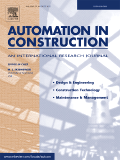
AUTOMATION IN CONSTRUCTION
Advancing Automation for a Smarter, Greener Construction LandscapeAUTOMATION IN CONSTRUCTION is a premier academic journal published by Elsevier, dedicated to advancing the fields of Building and Construction, Civil and Structural Engineering, and Control and Systems Engineering. Since its inception in 1992, this journal has served as a vital platform for disseminating innovative research and practical applications in automation technologies within the construction industry. With a distinguished 2023 impact factor reflected in its Q1 ranking across multiple engineering categories—securing rank #3 in Civil and Structural Engineering and rank #3 in Building and Construction—AUTOMATION IN CONSTRUCTION stands out as a leading resource for researchers, professionals, and students keen on staying at the forefront of this rapidly evolving field. The journal offers access to cutting-edge studies that explore automation processes, methodologies, and tools, contributing to the enhancement of productivity and sustainability in construction practices. With contributions from global experts, each issue of AUTOMATION IN CONSTRUCTION provides comprehensive insights that help drive innovation and foster collaboration.
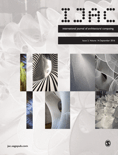
International Journal of Architectural Computing
Elevating Architectural Discourse through Computational Excellence.International Journal of Architectural Computing, published by SAGE Publications Ltd, serves as a vital platform for researchers, professionals, and students engaged in the intricate intersections of architecture, computing, and design. With an ISSN of 1478-0771 and an E-ISSN of 2048-3988, this esteemed journal has maintained a commendable standing in the academic community, reflected in its categorization within the top Quartiles (Q2) for both Building and Construction and Computer Graphics and Computer-Aided Design in 2023. The journal operates out of the United Kingdom and showcases innovative research that revolutionizes architectural practices through computational advancements, contributing meaningfully to global discourse. While the journal does not currently follow an Open Access model, it continues to uphold high academic standards, as indicated by its Scopus rankings, including a notable rank of #93 out of 223 in Engineering - Building and Construction. The journal encompasses a wide range of topics, inviting submissions that address contemporary challenges and methodologies in architectural computing, making it essential reading for those passionate about bridging the gap between design and technology.

Journal of Information Technology in Construction
Connecting Theory and Practice in Construction TechnologyThe Journal of Information Technology in Construction is a premier open-access journal dedicated to advancing knowledge in the intersection of information technology and construction practices. Established in 1996, this journal has emerged as a vital resource for researchers, professionals, and students in the fields of Building and Construction, Civil and Structural Engineering, and Computer Science Applications. Published by the INT COUNCIL RESEARCH & INNOVATION BUILDING & CONSTRUCTION, this journal's rigorous peer-reviewed content is designed to foster innovation and enhance the application of technological solutions within the construction sector. With a commendable reputation, the journal has secured Q1 ranking in Building and Construction and features in the top quartiles in related disciplines, ensuring its impact and relevance within academic and industrial communities. Conveniently accessible, the journal showcases high-quality research that influences both theoretical and practical aspects of construction technology, thereby contributing significantly to the field. Based in Sweden, the Journal of Information Technology in Construction stands as a crucial platform for disseminating insights that drive progress in this dynamic and evolving domain.
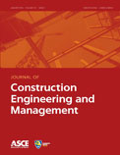
JOURNAL OF CONSTRUCTION ENGINEERING AND MANAGEMENT
Driving Progress in Construction Engineering and ManagementJournal of Construction Engineering and Management, published by the American Society of Civil Engineers (ASCE), is a premier scholarly journal dedicated to advancing the field of construction engineering and management. With an ISSN of 0733-9364 and an E-ISSN of 1943-7862, this respected journal boasts a noteworthy impact factor and is categorized in the Q1 quartile across significant fields such as Building and Construction, Civil and Structural Engineering, and Strategy and Management. Covering a broad spectrum of topics relevant to professionals, researchers, and students from its inception in 1982 through 2024, the journal emphasizes innovative research and practical applications that are vital to the construction industry. While it is not an open-access journal, it provides essential insights into the evolving dynamics of construction management, regulatory changes, and technological advancements, making it an indispensable resource for anyone looking to stay at the forefront of their field.
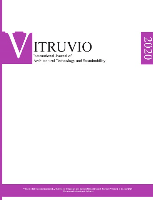
VITRUVIO-International Journal of Architectural Technology and Sustainability
Advancing sustainable design for a better tomorrow.Welcome to the VITRUVIO-International Journal of Architectural Technology and Sustainability, a leading open-access journal published by UNIV POLITECNICA VALENCIA, EDITORIAL UPV since 2015 and based in Spain. With its ISSN 2444-9091, this journal is dedicated to advancing the field of architectural technology and sustainability, providing a vital platform for researchers, professionals, and students alike. The journal has made significant strides in the academic landscape, achieving a Q3 ranking in Architecture and a Q4 ranking in Building and Construction for 2023. It features a diverse range of scholarly articles that explore innovative practices, cutting-edge research, and sustainable solutions in architecture. With a Scopus ranking placing it at #70/189 in Architecture and #161/223 in Building and Construction, it is positioned within the 63rd percentile and 28th percentile respectively, demonstrating its increasing impact in these vital fields. We invite you to engage with our content and contribute to the ongoing discourse around sustainability in architectural practice.